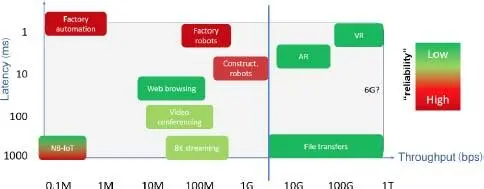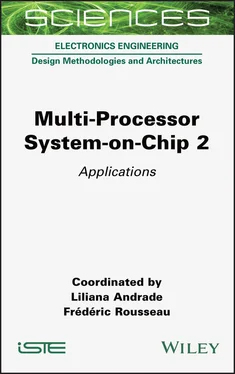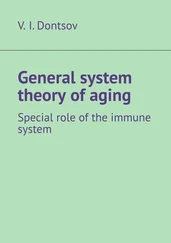For the contemporary reader, this chapter offers an incremental contribution to the fulfillment of that vision, spanning the gap between 5G and 6G. For the future reader, this chapter offers a methodology of translating workloads via a specific algorithm to HW.
Section 1.2shows the trends and analyzes the workloads defined by the standards. In addition, it gives lower and upper requirements to be considered when implementing a communications modem. In section 1.3, we give the reader a background on the 6G candidate waveform modulation generalised frequency division multiplexing (GFDM), develop a GFDM-associated dataflow processing graph and pseudo-code. Section 1.4covers precision requirements, in which we explore required bit-lengths to represent data and satisfy 3GPP LTE/NR error requirements. Section 1.5presents the implementation, GFDM vectorization variants, loop order variants and many properties that arise from loop and vectorization arrangements, such as the possibility of minimizing cycle counts for maximum throughput or minimizing the number of memory accesses for low-power operation.
1.2. Breadth of workloads
The first step towards estimating the HW requirements for a typical beyond 3GPP 5th Generation New Radio (5G) algorithm is sizing the span of workloads in terms of throughput and deadlines under which data processing has to finish. To study the matter, we go over the holistic vision and trends of what we expect in 6G, followed by an analysis of the key deployed 5G standard specifications. From the latter, we identify the far corners that stretch the workload requirement space, see how these corners fit into the vision and trends and provide numerical values for HW requirements of a future MPSoC. Finally, throughout the workload analysis, the emerging theme is the required high flexibility, which leads us to pick a vector digital signal processor (vDSP) as a middle ground that provides both flexibility and good data throughput for single instruction, multiple data (SIMD) processing.
1.2.1. Vision, trends and applications
The trend in cellular communications over the past generations was to pioneer with a technology in one generation and to optimize it in the next. As mentioned in the abstract, 1G and 2G introduced and optimized voice, 3G and 4G introduced and optimized broadband data streaming and, lastly, 5G and 6G introduce and should optimize the Tactile Internet. Furthermore, the generations also had their killer applications that captured the mass market: for 3G, it was a video call; for 4G, it was social media and streaming; for 5G and 6G, we cannot say for certain, but we can make informed predictions.
As of the advent of 4G, cellular networks are not built for low latency, and the introduction of the low-latency connection between network end points as a key requirement is a challenge for cellular network operators. With the current network infrastructure, it is hard to provide both massive data rates and low latency. Early solutions revolve around trading off one for the other. Hence, in the early adaptation stages, we can expect a killer application that requires low end-to-end latency, but does not require high data rates or vice versa. Likely candidates for low rate - low latency (LRLL) are applications such as factory automation, remote control, trajectory alignment and emergency stop aspects of self-driving for cars, UAVs and robots across a broad field of industries, from construction sites to warehouses. On the other hand, for high rate - high latency (HRHL), a killer application would likely be 8K streaming or other massive data transfers, where latency is not a constraint. Drawn from experience, we can expect 6G to be able to fix and provide both low latency and massive data rates. A likely candidate to be the killer application for high rate - low latency (HRLL) is seamless cellular AR, VR and other Internet gaming-oriented applications. Of course, we can also expect new LRLL and HRHL applications to emerge and further develop in their respective niches. We borrow from the work of (Fettweis et al . 2019) the neatly organized overview and categorization of applications in Figure 1.1.

Figure 1.1. Application mapping on the rate–latency plane with regard to the reliability requirement (Fettweis et al. 2019)
The reliability requirement, as part of the Tactile Internet, affects HW through new procedures and algorithms, which ultimately lead to expanded workloads in terms of additional data throughput and shorter deadlines for processing that data. Potentially, even new operating systems for MPSoCs centered on threat insulation and security will need to be investigated, which is outside the scope of this chapter, but the conclusions are the same. The prospective future 6G applications span vastly different data rates (10 kb/s – 1 Tb/s, i.e. 10 8× span) and latency requirements (2 ms – 2 s i.e. 10 3× span).
We have a broad and dynamic workload space with the total number of applications steadily increasing. These applications are sometimes concurrent in their operation, and in, at other times, they are exclusive, which adds another layer of complexity into consideration. For example, a handset user is either watching a video stream or playing an AR-based game while taking a stroll through the city, not both at the same time.
The challenges presented above, combined with new signal processing tasks associated with radio issues when working in new frequency ranges, make HW design choices particularly hard, efficiently balancing between architecture complexity and size, power consumption and cost. The HW challenge is certainly the “half a trillion dollar question” 1 . There is no other way to treat this than as an onion problem, and to peel it layer by layer, going step by step, the first step being standard specifications.
1.2.2. Standard specifications
High variability is built into modern standards through their many modes of operation. One aspect by which these modes may differ are workloads. Let us analyze the workloads by looking at the most advanced 5G standard.
1.2.2.1. Processing deadline variability
If we look at the transmission time interval (TTI) 2 consisting of 14 Orthogonal Frequency Division Multiplexing (OFDM) symbols 3 for 5G (3GPP 2019e), extrapolate its duration and compare it (see Figure 1.2) to the duration of 3GPP 4th Generation Long Term Evolution (4G) (3GPP 2018a) TTI of 14 OFDM symbols, we can make the following observations:
1 1) TTI duration is scaled with 2μ, where μ is a parameter 4 ;
2 2) TTI duration is not a function of bandwidth (BW) allocated for that TTI;
3 3) for a fixed BW and the same number of OFDM symbols per TTI (i.e. the same amount of data), the duration of the TTI differs (i.e. the deadline to process that data differs);
4 4) there is a 16× difference in processing deadlines between the corner cases.
Depending on the mode of operation, the computational engine may need to process the same amount of data with deadlines shifting 16× during operation.
The processing deadline for baseband physical layer processing is constrained by the hybrid automatic repeat request (HARQ) media access control layer (MAC-L) procedure, which is 3 TTIs long. Let us assume, as a rule of thumb, that we have 1 / 3 of the 3 TTI budget associated with waveform modulation, while the other 2 / 3 are reserved for other processing steps 5 . With that in mind, the deadlines are simplified and match the TTI duration for the given subcarrier spacing parameter μ .
Читать дальше













